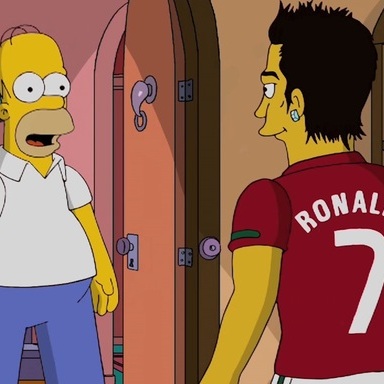
Henry Sandbank Archive
By Bob Fagan on Nov 18, 2015
Henry Sandbank, the great director and photographer had a 50-year career, producing over 1700 commercials, for companies such as IBM, Xerox, AT&T, BMW, Volkswagen, Volvo, Honda, Mercedes, Sony, Kodak, Nestle, Chanel, General Motors, and many others. His son Ken and the Sandbank family recently entrusted his archive to The One Club for safekeeping and to keep his legacy alive. After organizing and converting the tapes, which we have done, we will begin to showcase Henry’s work. Following is a small biography of Henry’s career.
Henry Sandbank was born to Jewish parents in Germany, 1932, at a time when the ideal of 'purity' motivated both the Nazi and Bauhaus movements. Both had their effect. By escaping the former, he was able to forge a career that in many ways embraced the latter.
After escaping to the South Bronx as a young boy, Henry soon took a serious interest in photography. After graduating from the well-regarded School of Industrial Arts, he married Judith Lebow and got a job taking photographs for catalogues. But with the advent of the Korean War, it became necessary to put down the camera and pick up a rifle.
Returning from war, he and Judy left the city for comparatively sedate Syracuse, New York. Henry became a partner in a photography studio that did industrial and advertising photography for locally based corporations. It was during this time that Henry's personal ambition, aesthetic convictions and creative restlessness crystallized into the force that would take him far beyond what Syracuse could offer.
He worked nights creating a portfolio of photographs that-perhaps for the first time-expressed his distinctive vision: strong, clear and often askance. Henry's work is recognized for its strong graphic approach and clarity of concept.
Henry's bold, minimalist and sometimes subversive work appealed to those leading advertising's creative revolution in the 1960s. And back in New York, Henry was soon collaborating with Madison Avenue's luminaries to create many of the ads that represent the essence of this creative revolution.
Henry's transition to directing television commercials was a natural one. The print medium was succumbing to television and more and more of his clients urged him to take up the film camera. His commitment to clear, simple statements remained intact, even as the projects he was offered became increasingly complex. He quickly developed a reputation as a problem-solver and much of his best-known work is visually, beautifully simple, and yet technically, extraordinarily complex.
Henry Sandbank was born to Jewish parents in Germany, 1932, at a time when the ideal of 'purity' motivated both the Nazi and Bauhaus movements. Both had their effect. By escaping the former, he was able to forge a career that in many ways embraced the latter.
After escaping to the South Bronx as a young boy, Henry soon took a serious interest in photography. After graduating from the well-regarded School of Industrial Arts, he married Judith Lebow and got a job taking photographs for catalogues. But with the advent of the Korean War, it became necessary to put down the camera and pick up a rifle.
Returning from war, he and Judy left the city for comparatively sedate Syracuse, New York. Henry became a partner in a photography studio that did industrial and advertising photography for locally based corporations. It was during this time that Henry's personal ambition, aesthetic convictions and creative restlessness crystallized into the force that would take him far beyond what Syracuse could offer.
He worked nights creating a portfolio of photographs that-perhaps for the first time-expressed his distinctive vision: strong, clear and often askance. Henry's work is recognized for its strong graphic approach and clarity of concept.
Henry's bold, minimalist and sometimes subversive work appealed to those leading advertising's creative revolution in the 1960s. And back in New York, Henry was soon collaborating with Madison Avenue's luminaries to create many of the ads that represent the essence of this creative revolution.
Henry's transition to directing television commercials was a natural one. The print medium was succumbing to television and more and more of his clients urged him to take up the film camera. His commitment to clear, simple statements remained intact, even as the projects he was offered became increasingly complex. He quickly developed a reputation as a problem-solver and much of his best-known work is visually, beautifully simple, and yet technically, extraordinarily complex.


Related
Influencing Culture
Pencil and Cube winning work to honor and celebrate Black History Month
Best Beer Commercials - The One Club for Creativity
We hand picked some of our favorite One Show-winning beer spots from the past 20 years.
Best Dog Commercials - The One Club for Creativity
We hand picked our favorite dog commercials over the years.
The One Club For Creativity's Favorite Soccer Commercials
We dipped into our archives and picked a few of our favorites soccer ads.



